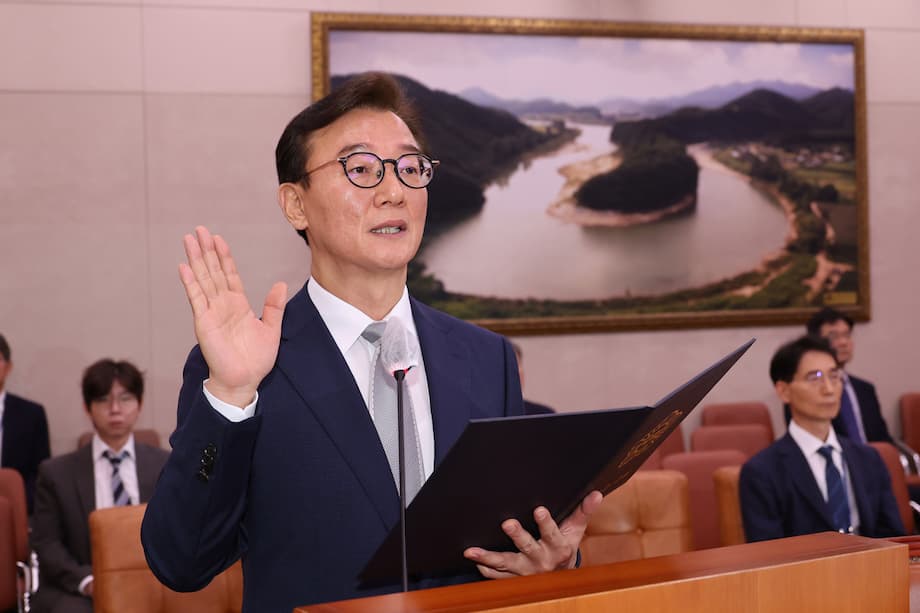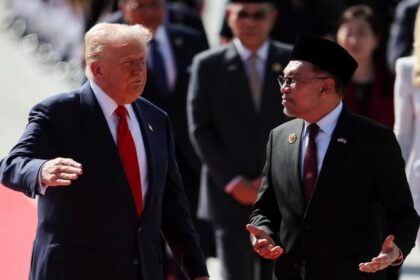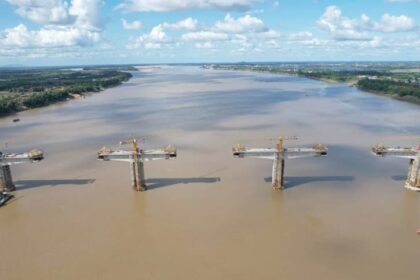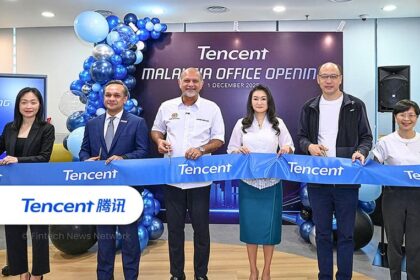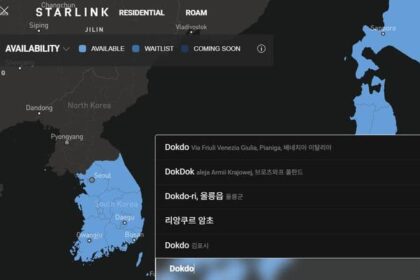The Arctic Shipping Route: Korea’s New Maritime Frontier
As climate change accelerates the melting of Arctic sea ice, a once-impossible dream is rapidly becoming a reality: a northern maritime corridor connecting Asia and Europe through the Arctic Ocean. For South Korea, a nation whose economic lifeblood flows through its ports, the emergence of the Arctic shipping route is both a paradigm-shifting opportunity and a complex logistical gamble. The government, led by President Lee Jae-myung and the Democratic Party, has made the Arctic route a cornerstone of its long-term logistics and economic strategy, aiming to position Busan as a global hub for this new era of shipping.
- The Arctic Shipping Route: Korea’s New Maritime Frontier
- Why the Arctic Route Matters for Korea
- Busan: From Industrial Decline to Arctic Gateway
- Technological Edge: Korea’s Shipbuilding and Icebreaker Prowess
- Geopolitical Stakes: Navigating a Complex Arctic Landscape
- Risks and Challenges: Environmental, Economic, and Political
- Policy Roadmap: Korea’s Arctic Strategy in Action
- International Perspective: Russia, China, and the Future of the NSR
- Broader Implications: Korea’s Arctic Bet and the Global Order
- In Summary
With global trade patterns shifting, geopolitical tensions rising, and the search for alternative trade corridors intensifying, Korea’s Arctic ambitions are drawing attention not just at home, but across the world. What’s at stake is more than just shorter shipping times—it’s the future of Korea’s industrial heartlands, its role in global supply chains, and its ability to navigate a rapidly changing geopolitical landscape.
Why the Arctic Route Matters for Korea
The Arctic shipping route, particularly the Northern Sea Route (NSR) along Russia’s northern coast, offers a dramatic shortcut between East Asia and Europe. Traditionally, ships traveling from Busan to Rotterdam must pass through the congested and geopolitically sensitive Suez Canal, covering about 19,900 kilometers (12,400 miles). The NSR could cut this distance by roughly 7,000 kilometers, reducing travel time by up to 10 days and potentially lowering fuel costs and emissions by 20–30%.
For Korea, whose economy is deeply intertwined with global trade, these savings are significant. Busan, already the world’s second-largest transshipment port after Singapore, is strategically positioned to consolidate cargo from China, Japan, and Southeast Asia, forwarding it to Europe via the Arctic. This could help revitalize Korea’s southern industrial regions, which have struggled with economic stagnation and population decline.
President Lee Jae-myung has made the Arctic route a centerpiece of his economic vision, stating during a campaign rally,
“Everyone, Busan is struggling—the economy is facing headwinds, the population is shrinking, and young people are leaving. Shouldn’t we find an alternative? Today, I’ve brought one. The Arctic route is opening up.”
Lee’s vision is not just about logistics; it’s about transforming Busan and the surrounding region into Korea’s maritime capital, fostering new industrial clusters, and securing the nation’s place in the next chapter of global trade.
Busan: From Industrial Decline to Arctic Gateway
Busan’s established status as a logistics powerhouse gives Korea a head start. In 2024, the port handled about 13.5 million twenty-foot equivalent units (TEUs), with 55% of its total freight volume transshipped to destinations in Europe and North America. Its proximity to major shipbuilding yards and petrochemical complexes in Ulsan and Geoje further strengthens its credentials.
Recognizing this potential, the government is taking concrete steps. Oceans Minister nominee Chun Jae-soo has pledged to relocate the Ministry of Oceans and Fisheries to Busan, aligning policy and industry in the city. The Busan Port Authority has established a dedicated Arctic Route Task Force, bringing together industry leaders, researchers, and policymakers to develop strategies, foster international partnerships, and build the necessary infrastructure for Arctic shipping.
At the first meeting of the task force in February 2025, Chun emphasized the need for international cooperation and investment, stating,
“We must work closely with all stakeholders to realize the Arctic route’s potential and ensure Korea’s maritime industry remains competitive in this new era.”
Busan’s transformation is not just about infrastructure. The city is investing in workforce development, training polar maritime officers, and supporting the construction of specialized vessels—particularly icebreakers and ice-class ships essential for Arctic navigation.
Technological Edge: Korea’s Shipbuilding and Icebreaker Prowess
South Korea’s shipbuilding industry is a global leader, and its expertise is central to the Arctic strategy. Korean yards like Hanwha Ocean (formerly Daewoo Shipbuilding & Marine Engineering) and Samsung Heavy Industries have built dozens of high ice-class vessels, including the advanced Arc-7 LNG carriers used in Russia’s Yamal gas project. These ships can autonomously navigate through ice up to 2.1 meters thick, a capability few other countries possess.
Professor Ryu Min-cheol of Korea Maritime & Ocean University notes,
“Korea is one of the only countries with experience building commercial icebreakers, giving it a technological advantage over Japan, which has mainly constructed research vessels.”
This technological edge is not just about commercial gain. As the United States seeks to counter Chinese and Russian influence in the Arctic, Korea’s icebreaker-building capabilities are emerging as a potential bargaining chip in diplomatic negotiations, including ongoing tariff talks with Washington.
Innovation is also driving Korea’s approach to Arctic navigation. Hyundai Glovis, a major logistics firm, is retrofitting its fleet with AI-driven autonomous navigation systems developed by Avikus, an HD Hyundai affiliate. These systems promise improved safety, efficiency, and carbon emissions—key factors for operating in the challenging Arctic environment.
Geopolitical Stakes: Navigating a Complex Arctic Landscape
The Arctic is not just a logistical challenge—it’s a geopolitical chessboard. The NSR runs almost entirely through Russian territorial waters, giving Moscow significant control over access, regulations, and fees. Since the outbreak of the Russia-Ukraine war in 2022, Western sanctions have limited international shipping on the route, and major European carriers have publicly ruled out its use due to environmental and political concerns.
China, meanwhile, is aggressively promoting the “Polar Silk Road,” with its NewNew Shipping company operating container services between Shanghai and Russia’s Arkhangelsk. President Xi Jinping and President Vladimir Putin have pledged to deepen Arctic cooperation, raising the stakes for regional competition.
Japan, while scaling back direct involvement since the Ukraine conflict, retains stakes in Arctic resource projects and maintains a technological edge in icebreaker construction. The United States, lacking sufficient icebreaking capacity, is looking to Korea and Japan as potential partners in Arctic infrastructure development.
President Lee Jae-myung has repeatedly stressed the importance of diplomatic balance, warning,
“If our ties with Russia remain antagonistic and Russia says, ‘We won’t do it with you (in Arctic route–related projects), we’ll do it with Japan,’ then we’ll be the ones to suffer.”
Experts agree that international cooperation, compliance with international law, and participation in Arctic governance are critical for Korea’s success. The country has been an observer in the Arctic Council since 2013 and has invested in scientific research stations and collaborative projects with Arctic states.
Risks and Challenges: Environmental, Economic, and Political
Despite the promise of the Arctic route, significant hurdles remain. The region’s harsh climate, unpredictable sea ice, and limited navigational infrastructure make shipping risky and expensive. Icebreaker escorts, polar-certified pilots, and specialized insurance can increase costs by 5–30% compared to traditional routes.
Environmental concerns are also paramount. The fragile Arctic ecosystem is vulnerable to pollution, oil spills, and the impacts of increased shipping traffic. Major European shippers, including Maersk and Hapag-Lloyd, have cited these risks in their decisions to avoid the NSR.
Geopolitical instability adds another layer of uncertainty. The NSR’s reliance on Russian cooperation means that access can be restricted at any time, especially amid ongoing tensions with the West. High insurance premiums, the need for icebreakers, and compliance with international regulations further complicate the business case.
Professor Kim Tai-yoo of Seoul National University summarizes the dilemma:
“If South Korea can secure early access to the Arctic route and establish key port hubs, it could position itself at the core of the new global order. But the risks—political, environmental, and economic—are substantial.”
Policy Roadmap: Korea’s Arctic Strategy in Action
The Korean government is moving proactively to address these challenges. The Democratic Party has proposed a special law to support Arctic route development, including the creation of a presidential committee, an Arctic Shipping Information Center, and a strategic fund for Arctic investment. The Busan Port Authority’s task force is developing a long-term roadmap, focusing on:
- Building supportive policies and industry initiatives
- Forging partnerships with domestic and international shipping companies
- Investing in infrastructure and workforce development
- Promoting research and international cooperation
Lessons from past Arctic shipping experiments—such as Hyundai Glovis and Pan Ocean’s test voyages in the 2010s—underscore the need for careful planning, robust risk management, and flexible adaptation to changing conditions.
Experts emphasize that Korea must nurture competitive shipping companies based in Busan, capable of securing sufficient cargo volume to sustain operations along the NSR. Attracting smaller cargo flows from surrounding regions and building commercial capability are essential for Busan to establish itself as a true Arctic hub.
International Perspective: Russia, China, and the Future of the NSR
Russia’s ambitions for the NSR are clear: Moscow has invested heavily in Arctic infrastructure, nuclear icebreakers, and digital traffic control, aiming to make the route operational for longer seasons and attractive to international partners. However, actual shipping activity remains below Russian projections, with Western companies cautious due to sanctions and legal uncertainties.
China is a key partner for Russia, but its involvement is measured and focused primarily on trade with Russia itself. Other Asian countries, including India, Korea, and Japan, have shown interest but remain hesitant due to logistical, political, and environmental challenges.
The future of the NSR will depend on geopolitical shifts, particularly in relations between Russia and the West. If tensions ease, broader international participation may become possible. If not, Russia will likely deepen its reliance on Asian partners, but the route’s global significance will remain limited until these challenges are addressed.
Broader Implications: Korea’s Arctic Bet and the Global Order
Korea’s Arctic strategy is about more than just shipping. It’s a bet on the future of global trade, energy security, and industrial competitiveness. The route offers opportunities for Korea’s shipbuilding, marine resources, energy, fisheries, marine science, satellites, and submarine cable industries. It also positions Korea as a key player in the restructuring of global supply chains, especially as the world seeks alternatives to traditional maritime chokepoints.
At the same time, Korea must balance economic ambition with environmental stewardship and diplomatic finesse. The Arctic is a region of both promise and peril, and success will require careful management of risks, sustained investment, and a commitment to international cooperation.
In Summary
- The Arctic shipping route, especially the Northern Sea Route, offers Korea a shorter, potentially cheaper, and geopolitically safer path between Asia and Europe.
- Busan is being positioned as a global Arctic logistics hub, with government support, industry investment, and workforce development underway.
- Korea’s shipbuilding expertise, particularly in icebreakers and ice-class vessels, gives it a technological edge in Arctic navigation.
- Geopolitical tensions, environmental risks, and high operational costs remain significant challenges to the route’s commercial viability.
- International cooperation, compliance with Arctic governance, and diplomatic balance with Russia, China, and the US are critical for Korea’s success.
- The Arctic strategy is part of a broader vision to revitalize Korea’s industrial regions, secure its place in global supply chains, and adapt to a changing world order.


